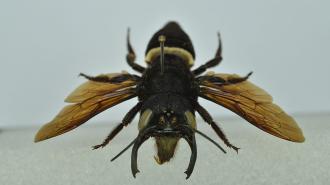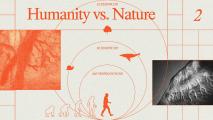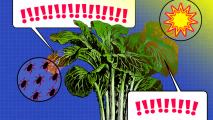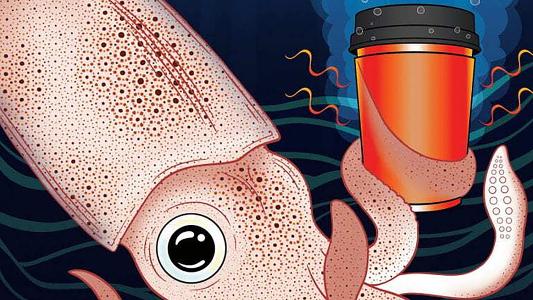In 1859, while exploring the remote island of Bacan in the North Moluccas, Indonesia, the renowned naturalist Alfred Russel Wallace made an astounding discovery: the Megachile pluto — the world’s largest bee. Wallace described the bee, which is about four times the size of a honeybee, as a “large black wasp-like insect, with immense jaws like a stag-beetle.” But for more than a century, that was the only known sighting of the Megachile pluto, and some feared that deforestation had rendered the giant insect extinct.
In 1981, biologist Adam Messer discovered several Megachile nests on Bacan and neighboring islands — a sight so rare that locals said they’d never before seen the nests. Again, it would be the only known sighting for decades.
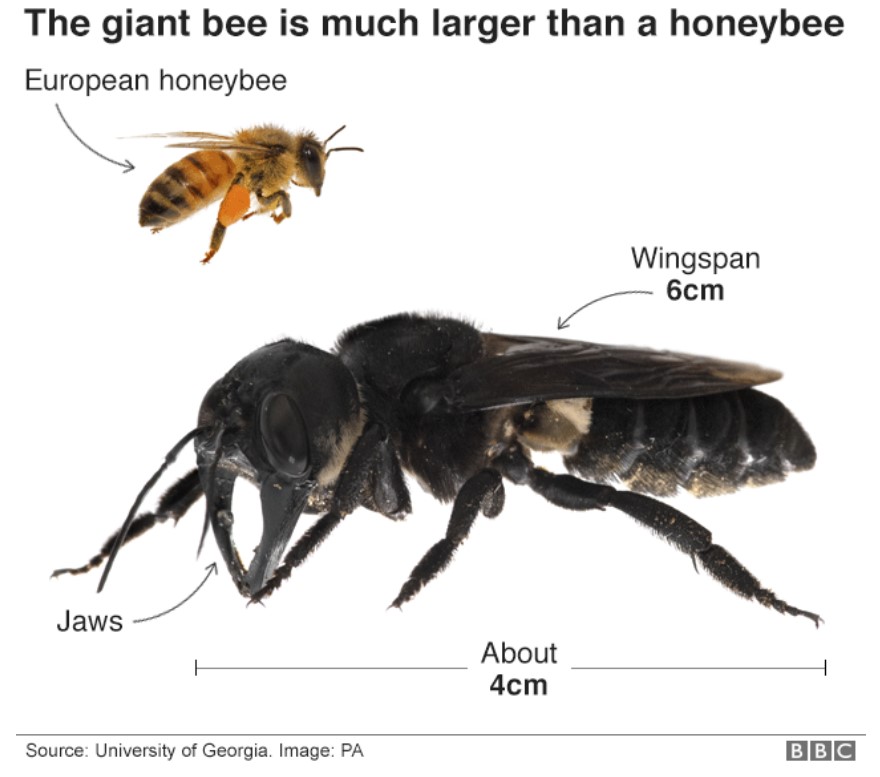
Then, several years ago, Eli Wyman, an entomologist at the American Museum of Natural History, and nature photographer Clay Bolt teamed up to go rediscover Wallace’ giant bee. In early 2018, the pair saw that a Megachile specimen had sold for $9,000 on eBay, creating a new sense of urgency to travel to Indonesia to find the bee.
“We decided that we had to go there,” Bolt told Earther. “Number one, to see it in the wild, to document it, but also to make local contacts in Indonesia that could begin to work with us as partners to try and figure out how to protect the bee.”
In January, Clay, Wyman and other researchers finally rediscovered Wallace’s giant bee, this time in a termites’ nest in a tree.
“It was absolutely breathtaking to see this ‘flying bulldog’ of an insect that we weren’t sure existed any more,” Clay Bolt, the photographer who captured the first images of the species alive, told the BBC. “To actually see how beautiful and big the species is in life, to hear the sound of its giant wings thrumming as it flew past my head, was just incredible.”
Fears of starting a collectors frenzy
The hope, among scientist and conservationists, is that the existence of a sole female in the wild means the region’s forests still harbor a sustainable population of the giant bees. One concern, however, is that the news will spark frenzy among collectors willing to pay big money for rare specimens.
“We know that putting the news out about this rediscovery could seem like a big risk given the demand, but the reality is that unscrupulous collectors already know that the bee is out there,” Robin Moore, a conservation biologist with Global Wildlife Conservation, told The Guardian. “By making the bee a world-famous flagship for conservation we are confident that the species has a brighter future than if we just let it quietly be collected into oblivion.”
Why it’s hard to know when a species is extinct
Determining when a species is extinct is difficult, in short, because the planet is huge, conservation resources are scarce, and it’s simply hard to prove a negative.
“It all boils down to the challenge of definitively proving something does not exist,” Gary Langham, chief scientist for the National Audubon Society, an environmental organization, told Audubon.org. “It’s much easier to prove something does exist.”
Size also makes a difference: It’s far easier for scientists to keep track of the populations of large animals — say, the northern white rhino, whose last male died in 2018 — than of small birds or insects. For some animals, scientists often must rely on more indirect measures to determine population size, such as by gathering data on habitat destruction, collecting reports of sightings and examining things left behind by the animals, like droppings or nests. The difficult of these kinds of surveys means that it’s usually not enough to say that a species is extinct simply because nobody’s seen it in some 50 years.
“It’s a thing that keeps getting perpetuated, that there’s a 50 year rule,” Craig Hilton-Taylor, head of the Red List unit at the International Union for Conservation of Nature (IUCN), told the BBC.
This article was reprinted with permission of Big Think, where it was originally published.
